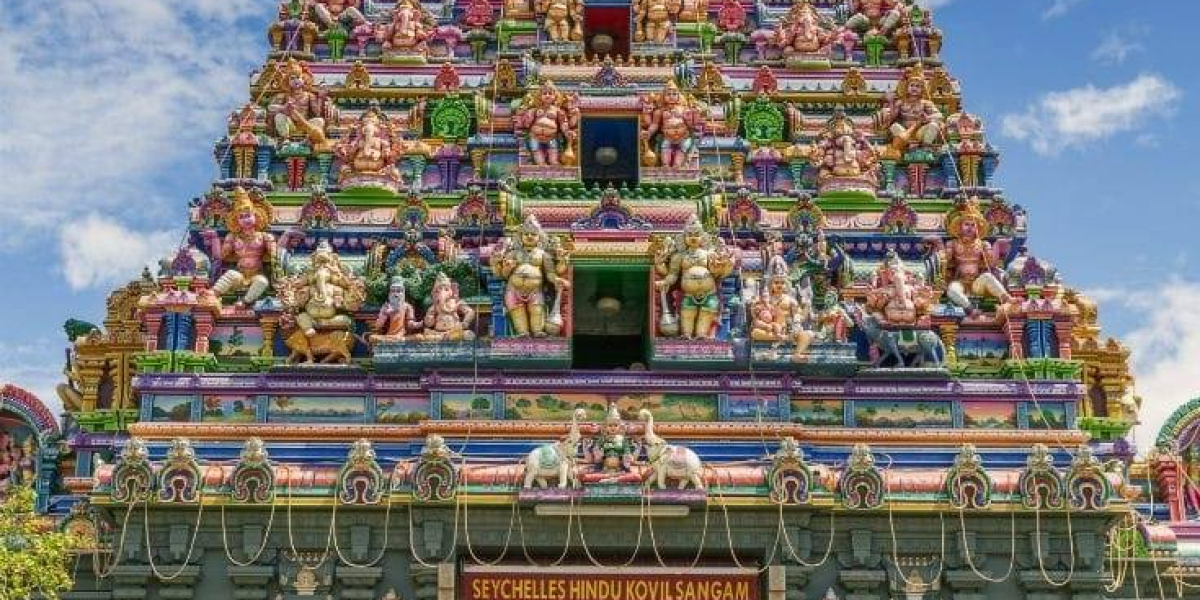In the heart of Victoria, the vibrant streets will come alive on Thursday, January 25, with the enchanting colors and melodies of the Thai Poosam Kavadi Festival. The annual spectacle, hosted by the Navasakthi Vinayagar temple, pays homage to Lord Muruga, the Warrior deity of the hills.
The Kavadi festival, a deeply revered event, centers around the symbolic act of carrying milk-filled pots in procession, culminating in the offering of all the milk to anoint Lord Muruga, seeking his divine blessings. Devotees, both men and women, observe rigorous fasting for at least three days before their participation, displaying unwavering devotion.
Anticipated to be a grand affair, more than 30 males will partake in various types of Kavadi, including Poottukavadi, Chariotkavadi, Alagukavadi, Palkavadi, and Pannierkavadi. Some devotees take their devotion to another level, with steel and silver shrapnels piercing their cheeks, tongue, arms, and back—a form of penance for the deity. Meanwhile, women join the procession by gracefully carrying pots of milk on their heads.
The procession, commencing at 8:45 am, will wind its way through Quincy Street, Revolution Avenue, Harrison Street, and Lodge Street before concluding at the Navasakthi Vinayagar temple. Accompanying the march will be traditional oriental music, performed by a specially flown-in group from India.
The festival's crescendo will occur at noon with a special abishegam, pooja, prayers, and a communal vegetarian lunch served to all in the temporary Sri Navasakthi Vinayagar community hall. The land earmarked for the hall is set for future development into a cultural center.
Originating in 1993 within the inner courtyard of the temple, the Thaipoosam Kavadi Festival has evolved significantly. Since 1996, the Kavadi procession has graced the streets of Victoria, growing in both quantity and quality. Recognized as a national festival, it captivates not only the local community but also attracts global tourists, providing a glimpse into oriental cultural values.
The festival marks its 28th edition this week, symbolizing a robust tradition reinforced by state patronage. Since 1998, the Seychelles government has declared the Kavadi day a holiday for all Hindus. Thaipoosam, dedicated to Lord Murugan, has become an occasion for religious fervor, cultural celebration, and communal harmony in Seychelles.
The festival's significance extends beyond religious observance, serving as a powerful assertion of Hindu individuality and a testament to Hindu solidarity in Seychelles' diverse and multicultural landscape. It offers a window into puranic mythology, the Thamil Bhakthi movement, Saiva Sithanatha philosophy, and the rich tapestry of Thamil culture.
Symbolism abounds in the Kavadi festival, with the peacock-decorated metal frame representing Lord Murugan's carrier. The central wooden beam, adorned with pots on either side, symbolizes the balance between good and evil deeds. Devotees, demonstrating their piety and humility, carry Vel-shaped arrows, signifying their willingness to suffer for others.
Noteworthy is the meticulous piercing of silver or steel pins into devotees' skin—a ritual symbolizing the purification of the soul. Accompanied by oriental music from Tamil Nadu, the festival showcases the unification of Thamil identity through kavadi songs and dances, creating a cultural contrast for spectators and global tourists alike.
Over 28 years, the Kavadi festival has not only preserved and consolidated Hindu Thamil culture in Seychelles but also reinforced principles of care and share. The tradition of a common lunch for all signifies equality and shared humanity. It reflects a profound philosophy that, if embraced globally, could contribute to a more harmonious world.
The Seychelles Hindu Temple, through the grandeur of the Kavadi festival, continues to be a sacred space fostering piety, devotion, and cultural learning. In the spirit of true religious sanctity, it stands as a beacon of love, kindness, and global humanism.







